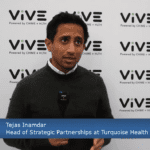On November 20, 2020, CMS together with OIG announced some long anticipated changes to the Stark Law and to the Anti-Kickback statute. Considering the law was enacted in 1989 and has had very little change since, many people had wanted changes. The process of revising the Stark Law started with an RFI in June 2018 followed by a proposed rule in October 2019 which then was delayed thanks to COVID-19. Delays aside, you can now see the full 1600+ pages of the Stark Law final rule on the Federal Register.
At its core, the changes to the Stark Law make sense. In a fee fore service world, it’s easy to see how referrals can be abused by clinicians who overutilize the system if they’re getting paid for those referrals. Thus the need for a law to prevent such abuse. However, in the value based care world, this doesn’t make sense. If a clinician is already at risk for the patient’s health, then being able to provide inducements to patients to utilize needed services is a great way to keep costs down. Plus, when a healthcare organization is at risk, they have a financial incentive to avoid overutilization. This is the focus of CMS’s efforts to modify the Stark Law.
A recently article by Lexology summarized the new Stark Law exceptions available for healthcare organizations:
- Full financial risk. This exception applies to value-based arrangements between VBE participants in a VBE that has assumed full financial risk for the cost of all patient care items and services covered by the applicable payor for each patient in the target patient population during the entire duration of the value-based arrangement.
- Meaningful downside financial risk to the physician. This exception applies to remuneration paid under a value-based arrangement where the physician is at “meaningful downside financial risk” for failure to achieve the value-based purpose of the VBE for the entire term of the value-based arrangement. While the proposed rule set “meaningful downside financial risk” to mean that the physician is responsible to pay or forgo no less than 25% of the total value of the remuneration the physician receives under the value-based arrangement, CMS lowered the threshold to 10%.
- Value-based arrangements regardless of the level of risk undertaken. The most onerous exception for value-based arrangements, this exception applies to value-based arrangements, regardless of the level of risk undertaken by the VBE or any of the VBE participants. Because the exception potentially applies to arrangements where neither party has assumed any financial risk, CMS included a number of additional requirements to satisfy this exception compared to the exceptions for full financial risk and meaningful downside financial risk, in an effort to guard against patient and program abuse.
- Indirect compensation arrangements that include a value-based arrangement. CMS finalized its proposal to make value-based exceptions applicable to indirect compensation arrangements that include a value-based arrangement to which the physician or physician organization is a direct party.
For those going full financial risk, they did change the timeline to implement from 6 months to now a full 12 months. Also, the change from 25% to 10% meaningful downside risk is a big change that will open up the exception to a lot more physicians. This should open up the opportunity for larger healthcare organizations to support smaller healthcare organizations.
Along with the above exceptions, the final rule also provided a number of safe harbors that allow for non-monetary donations. The first area allowed is for donation of Cybersecurity technology and Services. The second area is for EHR donations. It’s going to be interesting to see how this safe harbor is used.
I connected with Anders Gilberg, Senior Vice President, Government Affairs at Medical Group Management Association to learn his perspective on these changes. Here’s one of his comments:
The Stark Law codified an extremely broad prohibition on physician referrals. It established that if a financial relationship exists between a physician and an entity, referrals by the physician to that entity are prohibited unless structured to fit within an exception. As healthcare continues to evolve and move toward a more collaborative, integrated network, Stark’s general prohibition remains. Rather than recalibrating the prohibition, the government continues to rely on increasing numbers of regulatory exceptions. This has resulted in a framework that’s become untenable and includes codified regulatory text, rulemaking through preamble language, “special rules,” and deeming provisions. Adding layers of regulation is not a tenable solution and instead Congress must revisit the structure of the law.
I agree with his comment that Congress needs to take another look at the Stark law since the exception approach that CMS is taking gets really complex really quickly. Complexity is the easy way to stop innovators. Gilberg also pointed out that along with the law being broad, “the statute makes non-compliance a strict liability offense, meaning good faith efforts to comply with the law do not matter. Innocuous mistakes, misunderstanding the myriad of complex rules, or unknowingly violating the law can result in hefty penalties or even exclusion from Medicare. Only Congress can modify the intent to avoid punishing good faith actors.”
I give credit to CMS for doing what they can within the legislative constraints they’re bound, but there’s certainly more that needs to be done. We all understand why Stark was implemented and how without it things can be abused. However, there are opportunities in the value based care world to lower costs that require changes to Stark. I hope congress will take this up to provide healthcare with this opportunity to improve care and lower costs. Maybe these changes will allow some healthcare organizations to illustrate the benefits well enough to inspire new legislation.













